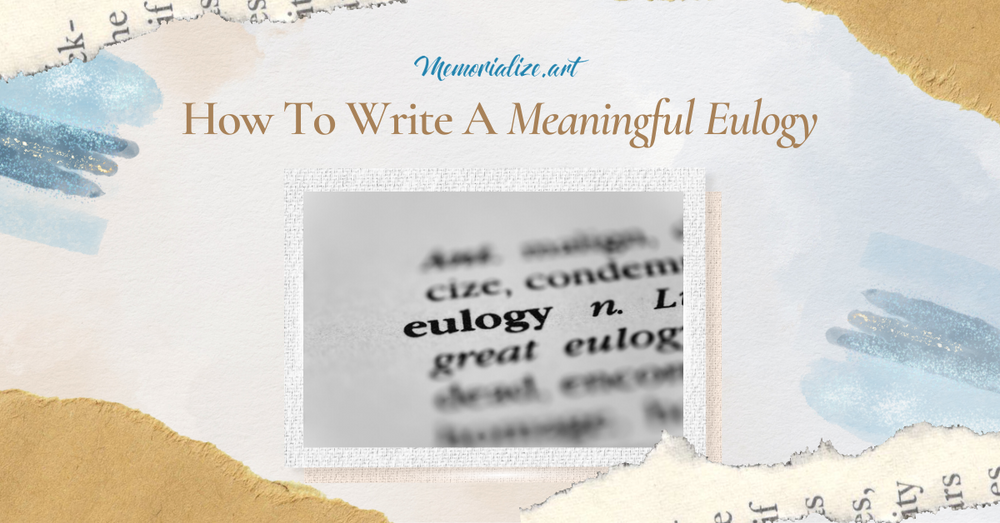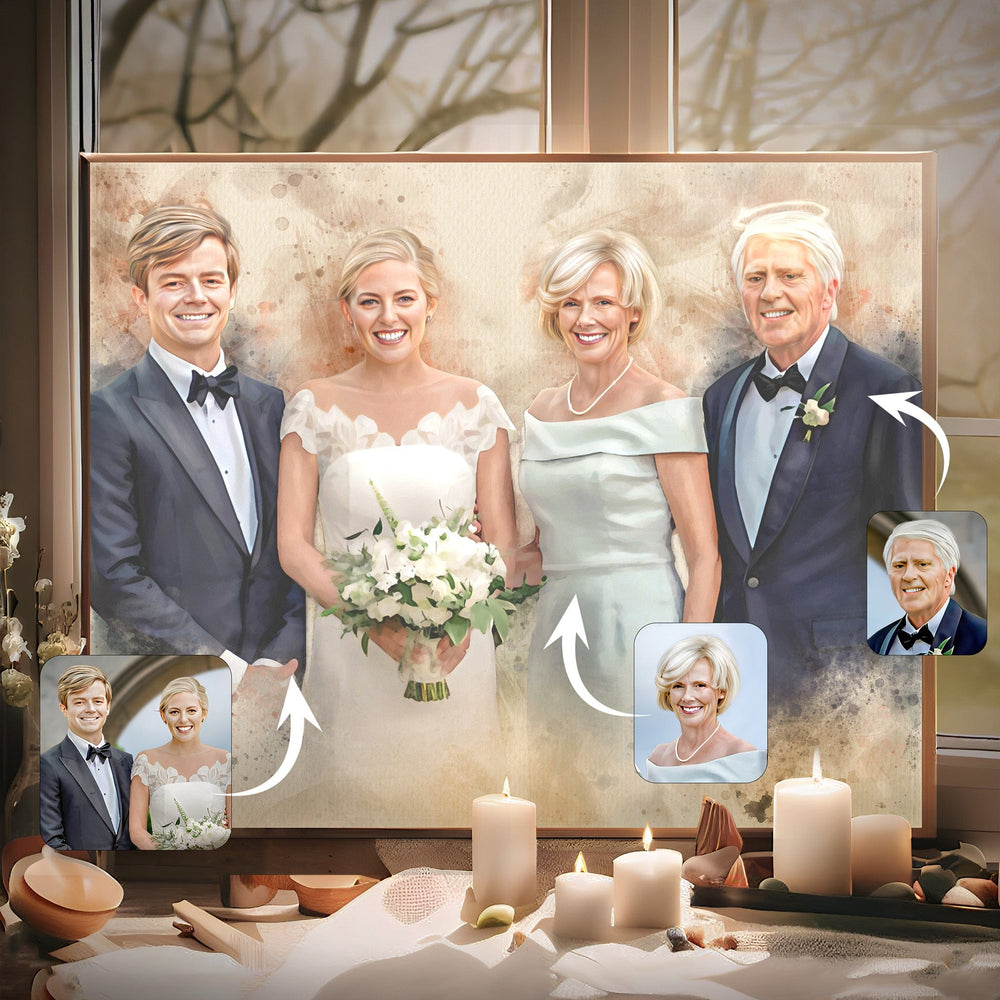How To Write A Meaningful Eulogy

You're here because you've been given the honor of writing a eulogy. No doubt, it's a tough task. It's more than just giving a speech; it's sharing a heartfelt narrative that captures the essence of the person you are honoring. Before we dive in, let's cover the eulogy definition. A eulogy is a speech or written tribute praising someone who has passed away. Now, let's break down how to make yours meaningful and respectful.

The Purpose of a Eulogy
The role of a eulogy is to celebrate the life of the deceased. This isn't just a chronological retelling of someone's life but rather a snapshot that captures their spirit, accomplishments, and the love they gave and received. In addition to offering comfort to the grieving, a eulogy serves as a lasting tribute that helps attendees gain a rounded understanding of the person being remembered. Think of it as the frame around a meaningful picture, highlighting the best features while adding context and depth.
What to Include in a Eulogy

Have Your Custom Family Portrait Painting Here
Personal Stories
Share anecdotes that capture the essence of your loved one. These personal stories evoke emotions and bring smiles to the faces of those mourning. Just like a family portrait painting captures the unique qualities of its subjects, these tales serve as windows into the soul of the person you're honoring. Think of stories that you'd share around the dinner table—those are often the most touching.
Character Traits
Describe the qualities that made the person unique. Was he generous? Was she funny? Highlight these traits. These character qualities are the colors that paint the full picture of who the person was. They make your eulogy rich and textured, providing a fuller understanding of the deceased to those who may not have known them as intimately.
Quotes or Sayings
Include any favorite sayings, quotes, or scriptures that were meaningful to the deceased or to your family. These can serve as guideposts or themes for the eulogy, giving it structure and emotional resonance. They can also offer comfort or inspiration to those who are mourning, providing a sense of continuity and connection to the values and beliefs the deceased held dear.
What You Should Not Say in a Eulogy

Controversial Topics
Avoid topics that could cause tension among family and friends, such as religious or political views. The focus should be on unity and shared grief, not on divisive issues that could detract from the memory of the deceased. You want the audience to leave feeling consoled and closer to each other, not divided.
Overly Personal Details
Be cautious about sharing overly personal or embarrassing stories. Keep the focus on celebrating the life lived. You might know the ins and outs of a person's life, but remember that a eulogy is a public speech. It's about respecting the dignity and privacy of the deceased, as well as the feelings of the family and friends present.
Excessive Length Caused By Irrelevant Details
This isn't the time for a lengthy narrative. Keep it concise and poignant. People's attention spans are naturally shorter during emotional times, and you want your words to be memorable rather than overwhelming. Plus, funerals often have time constraints, so it's best to make every word count.
How To Deliver Your Eulogy Speech

When you're up there giving the eulogy, remember that it's okay to show emotion. It's meant to be heartfelt. If you're looking to make the moment even more special, consider bringing a piece of memorial line art with you. This visual tribute can serve as a poignant backdrop, adding an extra layer of sentiment to your words. If you're unsure what to say at a funeral speech, don't fret; you can always read your eulogy rather than trying to recite it from memory.
Examples of Well-Written Eulogies
When you're sitting down to write a eulogy, having examples can really help guide the way. Let's first look at a basic outline, and then we'll go through examples for a friend, family member, and partner.
Basic outline for a eulogy:
Introduction: Briefly introduce yourself and your relationship to the deceased.
Personal Story: Share a touching or significant memory.
Character Traits: Describe qualities that made the person unique.
Quotes or Sayings: Include meaningful words, quotes, or sayings.
Conclusion: Wrap up by summarizing what the person meant to you and others.
Example for a Friend
Introduction: Hello, I'm [Your Name], and I was lucky enough to call [Friend's Name] my friend for over a decade.
Personal Story: I remember the first time we met. We were at a local band's concert, and we both reached for the last band T-shirt. Instead of fighting over it, we decided to share it. That little episode told me a lot about [Friend's Name].
Character Traits: [Friend's Name] was generous, always putting others before himself. His sense of humor was infectious, making even the toughest times bearable.
Quotes or Sayings: [Friend's Name] always said, "You can't control what happens to you, but you can control how you react." Those words resonate now more than ever.
Conclusion: Though we're saying goodbye today, [Friend's Name]'s spirit will forever live in the stories we share and the laughter that continues in his memory.
Example for a Family Member
Introduction: My name is [Your Name], and [Family Member's Name] was my [relationship].
Personal Story: One of my fondest memories was our yearly family camping trips. [Family Member's Name] was the campfire storyteller, captivating all of us with tales both tall and true.
Character Traits: She was nurturing but also incredibly strong, a rock that anchored our family through thick and thin.
Quotes or Sayings: As [Family Member's Name] often said, "Family is not an important thing; it's everything."
Conclusion: Though her physical presence is no longer with us, her love and wisdom will forever remain in our hearts.
Example for a Life Partner
Introduction: For those who don't know me, I'm [Your Name], and [Partner's Name] was the love of my life.
Personal Story: Our love story was one of shared dreams. Whether it was planning our next travel adventure or simply deciding what to cook for dinner, every moment was special.
Character Traits: [Partner's Name] was empathetic, always understanding and comforting me, no matter what we faced.
Quotes or Sayings: We had a saying, "Love is not about how many days, months, or years you've been together. Love is about how much you love each other every single day."
Conclusion: [Partner's Name] will forever be my soulmate, my confidant, and my greatest love. And I know that love will continue to guide me, always.
Elevate Your Memorial Experience with Memorialize Art

Creating a meaningful eulogy is no small feat. It's an emotionally challenging task, but also a beautiful opportunity to pay tribute to someone you've lost. A well-crafted eulogy can serve as a final gift, a lasting memory that honors the essence of their life.
Memorialize Art has you covered if you're looking for other meaningful ways to commemorate your loved one. They offer a wide range of services designed to add a unique touch to your memorial experience. From photo manipulation services that allow you to add deceased loved one to photo, to various artful memorabilia, they can help make your remembrance truly special.










